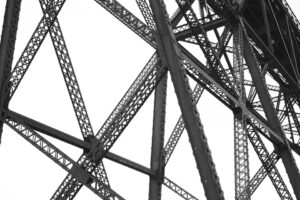 Fiber Bragg gratings are often used in strain sensing especially in such places where the environment is harsh (for instance, high-EMI, high-temperature, or highly-corrosive). Strain measurement is imperative during prototype design and testing. Strain measurements ensure that materials perform as they should and that the equipment is safe and durable. Measuring strain is crucial for testing complex structures, like aircraft, turbines, etc. There various ways in which stress can be measured, but it is widely accepted that FBG sensors are the most efficient way of strain measurement.
Fiber Bragg gratings are often used in strain sensing especially in such places where the environment is harsh (for instance, high-EMI, high-temperature, or highly-corrosive). Strain measurement is imperative during prototype design and testing. Strain measurements ensure that materials perform as they should and that the equipment is safe and durable. Measuring strain is crucial for testing complex structures, like aircraft, turbines, etc. There various ways in which stress can be measured, but it is widely accepted that FBG sensors are the most efficient way of strain measurement.
There are two types of applications of the fiber Bragg grating strain sensors:
- Long-term Static Strain Sensing. The main issue in the long-term static strain test is an interest in measuring the long-term static strain of the component in question. In order to carry out the above operation, it is necessary to set up the grating on the structure, find out what the initial wavelength is, and then within a set period of time to detect and record the changes that have occurred. Also, it is possible to return to the structure, reattach, and refer back to the initial wavelength. As a result, it becomes possible to obtain the determination of what this strain is from the initial condition at that time. The ability to disconnect your monitoring instrumentation and return for results after a large amount of time such as months or even years is a very great advantage of fiber Bragg grating sensors. For instance, in the case of bridges, it is common for engineers to visit the bridge and conduct the impact testing using an impact hammer on the different parts of the bridge. This is time-consuming and even hazardous because of the height of some bridge structures. The distribution of a number of FBG sensors throughout the bridge and the attachment of the instrumentation to this bridge on a periodic basis is a much more efficient solution. This is only one of the good examples to demonstrate the effectiveness of the fiber Bragg grating strain sensors. Besides bridges, other examples of using FBG for long-term static strain testing are buildings, piers, and structures in high earthquake-prone areas.
- Dynamic Strain Sensing. The different structures may have very-low-frequency modes, and they may also have higher modes due to the effects of wind and tide. Most earthquakes and other earth tremors are low-frequency events. Fiber Bragg gratings can be attached to the structures and monitored for the vibrations during the earth’s tremors and earthquakes. The low-frequency dynamic strain testing can help in determining the reaction of high-rise buildings to the wind. In addition to this, FBG sensors create connections with peers and other shore structures to determine their vibrations during the ebb and flow of tides. Dynamic strain testing can also be performed on transportation vehicles like automobiles, trains, and airplanes. In addition to civil structures and vehicles, there are a number of other applications for dynamic strain testing and vibration stress testing using fiber Bragg gratings. FBG sensors can be attached to industrial machinery to determine the frequency and amplitude of the stress vibrations.
Optromix, Inc. is a U.S. manufacturer of innovative fiber optic products for the global market, based in Cambridge, MA. Our team always strives to provide the most technologically advanced fiber optic solutions for our clients. Our main goal is to deliver the best quality fiber optic products to our clients. We produce a wide range of fiber optic devices, including our cutting edge customized fiber optic Bragg grating product line and fiber Bragg grating sensor systems.
If you would like to purchase Optromix FBG Strain Sensors, please contact us: info@optromix.com or +1 617 558 98 58

